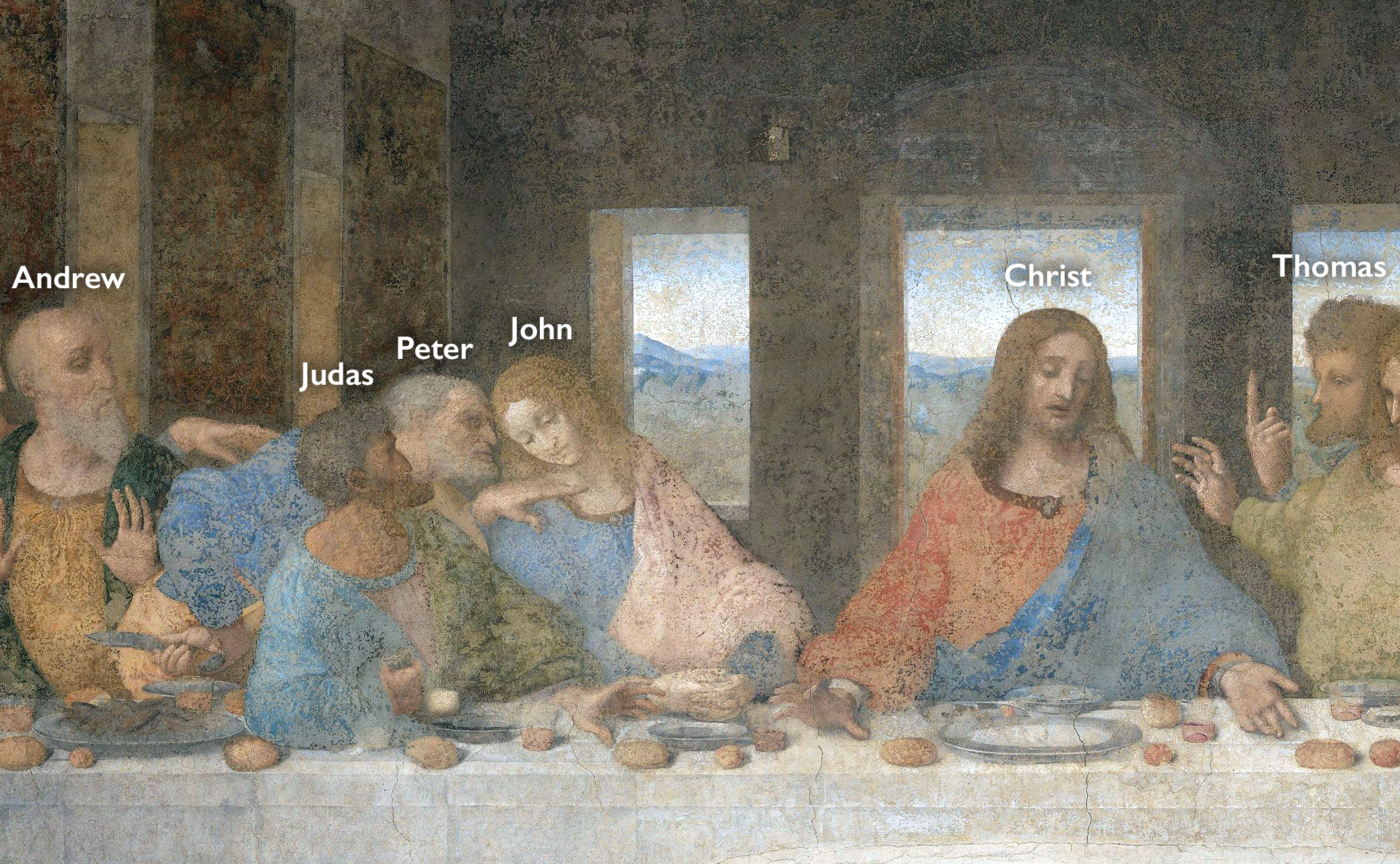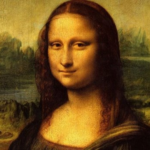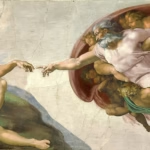Leonardo da Vinci’s The Last Supper stands as one of the most iconic and influential works of art in human history. This masterpiece, depicting the final meal shared by Jesus and his apostles before his crucifixion, transcends its religious origins to become a profound meditation on loyalty, betrayal, sacrifice, and the human condition. Painted in the late 15th century, The Last Supper continues to captivate viewers with its technical brilliance, emotional depth, and spiritual resonance. This article explores the multifaceted legacy of The Last Supper, examining its religious significance, artistic innovations, cultural impact, and enduring relevance in the modern world.
The Religious and Historical Context of The Last Supper
The Last Supper holds immense significance in Christian theology and tradition, representing a pivotal moment in the narrative of Christ’s life and teachings. Before delving into Leonardo’s interpretation, it’s crucial to understand the biblical and historical foundations of this event.
The Biblical Account

The Gospels of Matthew, Mark, Luke, and John all recount the Last Supper, though with varying details. The most commonly referenced account comes from Matthew 26:26-28:
“While they were eating, Jesus took bread, and when he had given thanks, he broke it and gave it to his disciples, saying, ‘Take and eat; this is my body.’ Then he took a cup, and when he had given thanks, he gave it to them, saying, ‘Drink from it, all of you. This is my blood of the covenant, which is poured out for many for the forgiveness of sins.'”
This moment is seen as the institution of the Eucharist, a central sacrament in many Christian denominations. The Last Supper also serves as the setting for Jesus’ prediction of his betrayal by Judas and denial by Peter, adding layers of dramatic tension to the scene.
Historical and Cultural Context
The Last Supper took place during Passover, a Jewish holiday commemorating the Israelites’ liberation from slavery in Egypt. This timing imbues the meal with additional symbolic weight, connecting Jesus’ impending sacrifice to the themes of redemption and freedom central to Passover.
In the social context of 1st century Palestine, shared meals held great significance. They were not merely about sustenance but also about fellowship, social bonds, and, in religious contexts, spiritual communion. Jesus’ choice to share this final meal with his closest followers underscores the intimacy and importance of the occasion.
Theological Implications
The Last Supper serves as a cornerstone of Christian theology, particularly in its connection to the concepts of atonement and salvation. The symbolism of bread as body and wine as blood establishes a tangible link between the physical and the spiritual, between Christ’s human form and his divine nature.
Moreover, the Last Supper prefigures the crucifixion, with Jesus offering himself as a sacrifice for humanity’s sins. This act of self-giving love becomes a model for Christian behavior and a central theme in Christian ethics.
Leonardo da Vinci’s Artistic Vision and Technique
Leonardo da Vinci’s The Last Supper is not merely a depiction of a biblical scene, but a revolutionary work that pushed the boundaries of Renaissance art. Created between 1495 and 1498, the mural showcases Leonardo’s mastery of technique and his innovative approach to composition and emotional expression.
Innovative Use of Perspective
Leonardo’s use of linear perspective in The Last Supper was groundbreaking for its time. He employed mathematical precision to create a sense of depth and space that draws the viewer into the scene. The vanishing point, located just behind Jesus’ right temple, subtly emphasizes Christ’s central role in the composition and the narrative.
The artist also used atmospheric perspective, with the background becoming progressively lighter and less detailed, enhancing the illusion of depth. This technique not only showcased Leonardo’s scientific understanding of optics but also served to focus attention on the figures in the foreground.
Emotional Expressiveness and Character Studies
One of the most striking aspects of The Last Supper is the vivid emotional portrayal of each apostle. Leonardo spent considerable time studying human facial expressions and body language to capture the range of reactions to Jesus’ announcement of betrayal.
Each disciple is individualized, with distinct features and gestures that hint at their personalities and roles in the story. From the shocked recoil of Bartholomew at the end of the table to the withdrawn posture of Judas, clutching his bag of silver, Leonardo creates a complex tableau of human emotion and interaction.
Experimental Techniques and Conservation Challenges
Leonardo’s experimental approach to The Last Supper extended to his choice of materials and techniques. Rather than using traditional fresco methods, which required quick work on wet plaster, he opted for a dry-wall technique that allowed him to work more slowly and make changes. He applied a mixture of egg tempera and oil paints to a base of dried plaster and gesso.
Unfortunately, this experimental method proved unstable, and the painting began to deteriorate within Leonardo’s lifetime. Centuries of environmental factors, misguided restoration attempts, and even wartime damage have taken their toll. Extensive conservation efforts in the 20th and 21st centuries have helped stabilize and restore the work, though much of the original paint has been lost.
The Cultural Impact and Artistic Legacy of The Last Supper
The Last Supper has left an indelible mark on Western culture, influencing not only subsequent religious art but also secular creative expressions across various media. Its impact extends far beyond the realm of visual arts, permeating literature, film, and popular culture.
Influence on Religious Art

Leonardo’s The Last Supper set a new standard for the depiction of this biblical scene. Subsequent artists drew inspiration from his composition, emotional expressiveness, and use of symbolism. The centrality of Christ, the grouping of the apostles, and the dramatic tension captured in the moment of revelation became touchstones for later interpretations.
Artists like Tintoretto in the 16th century and Salvador Dalí in the 20th century created their own distinctive versions of The Last Supper, engaging in a dialogue with Leonardo’s masterpiece while bringing their unique artistic visions to the subject.
Secular Appropriations and Parodies
The iconic status of The Last Supper has made it a frequent subject of appropriation and parody in secular contexts. From advertisements to album covers, the composition has been adapted to comment on contemporary issues or to create striking visual statements.
One notable example is Andy Warhol’s series of silkscreen prints based on The Last Supper, which explored themes of commercialization and the mass reproduction of images. These works blur the lines between high art and popular culture, challenging viewers to reconsider the meaning and value of iconic images in a modern context.
Literary and Cinematic References
The Last Supper has inspired numerous literary works, from poetry to novels. Dan Brown’s bestselling thriller “The Da Vinci Code” famously built an elaborate conspiracy theory around supposed hidden messages in Leonardo’s painting, sparking renewed public interest in the work.
In film, directors have often alluded to The Last Supper, either through direct visual references or by adapting its themes. Luis Buñuel’s surrealist film “Viridiana” includes a controversial tableau vivant of beggars posed in the style of Leonardo’s painting, subverting its religious significance to comment on social inequality.
The Last Supper in the Modern World: Interpretations and Relevance

Despite being over five centuries old, The Last Supper continues to resonate with contemporary audiences and spark new interpretations. Its themes of loyalty, betrayal, sacrifice, and community speak to fundamental aspects of the human experience that remain relevant across cultures and time periods.
Interfaith Dialogue and Understanding
In an increasingly globalized world, The Last Supper serves as a point of entry for interfaith dialogue. While deeply rooted in Christian tradition, the painting’s themes of shared meals, community, and spiritual reflection find echoes in many world religions.
Comparative studies have drawn parallels between the Last Supper and sacred meals in other faith traditions, such as the Passover Seder in Judaism or the langar in Sikhism. These comparisons can foster greater understanding and appreciation of diverse religious practices and beliefs.
Social Justice and Community Building
The image of Jesus sharing a meal with his disciples, including those who would betray and deny him, offers a powerful model for inclusive community building. Social justice advocates have drawn inspiration from this scene, emphasizing themes of radical hospitality and the dignity of all individuals, regardless of their status or past actions.
In some interpretations, the shared meal of The Last Supper becomes a call to address issues of food insecurity and economic inequality in modern societies. The painting serves as a reminder of the transformative power of breaking bread together and the importance of creating spaces where all are welcome at the table.
Psychological and Emotional Resonance
The complex interplay of emotions depicted in The Last Supper continues to fascinate psychologists and art therapists. The painting offers a rich tableau for exploring group dynamics, nonverbal communication, and the expression of inner turmoil.
Some modern interpretations focus on the psychological state of individual figures, such as the conflicted Judas or the devoted John, as archetypes for different aspects of the human psyche. These readings invite viewers to reflect on their own experiences of loyalty, doubt, and moral decision-making.
Conclusion: The Enduring Power of The Last Supper

Leonardo da Vinci’s The Last Supper stands as a testament to the enduring power of art to transcend its original context and speak to fundamental human experiences. From its religious origins to its status as a cultural icon, this masterpiece continues to inspire, challenge, and move viewers across centuries and cultures.
The painting’s complex legacy encompasses not only its artistic innovations and theological significance but also its role in shaping cultural imaginations and sparking ongoing dialogues about faith, community, and the human condition. As we continue to grapple with questions of meaning, morality, and connection in the 21st century, The Last Supper remains a potent symbol and a source of endless fascination. Whether viewed through the lens of religious devotion, artistic appreciation, or cultural analysis, The Last Supper invites us to contemplate our place in the grand narratives of history and spirituality.
✉️ Stay Connected — Subscribe for Weekly Updates
Discover timeless stories, practical wisdom, and beautiful culture — delivered straight to your inbox.
*We only share valuable insights — no spam, ever.







মিম আক্তার
Tháng 9 27, 2024Good